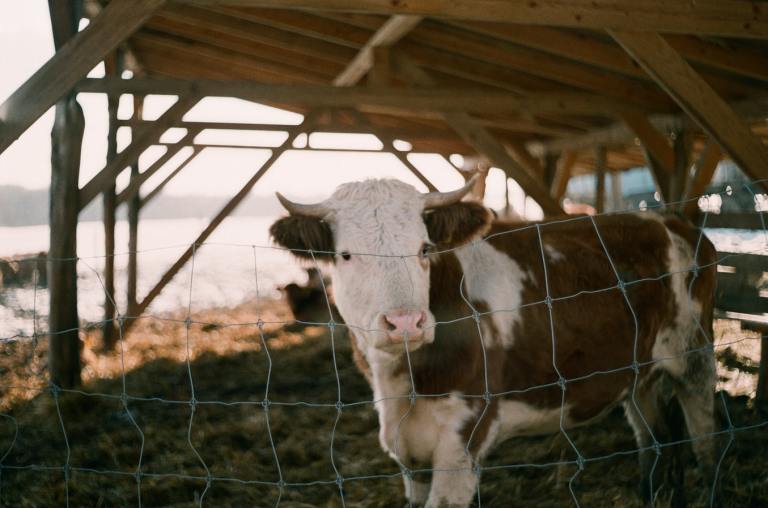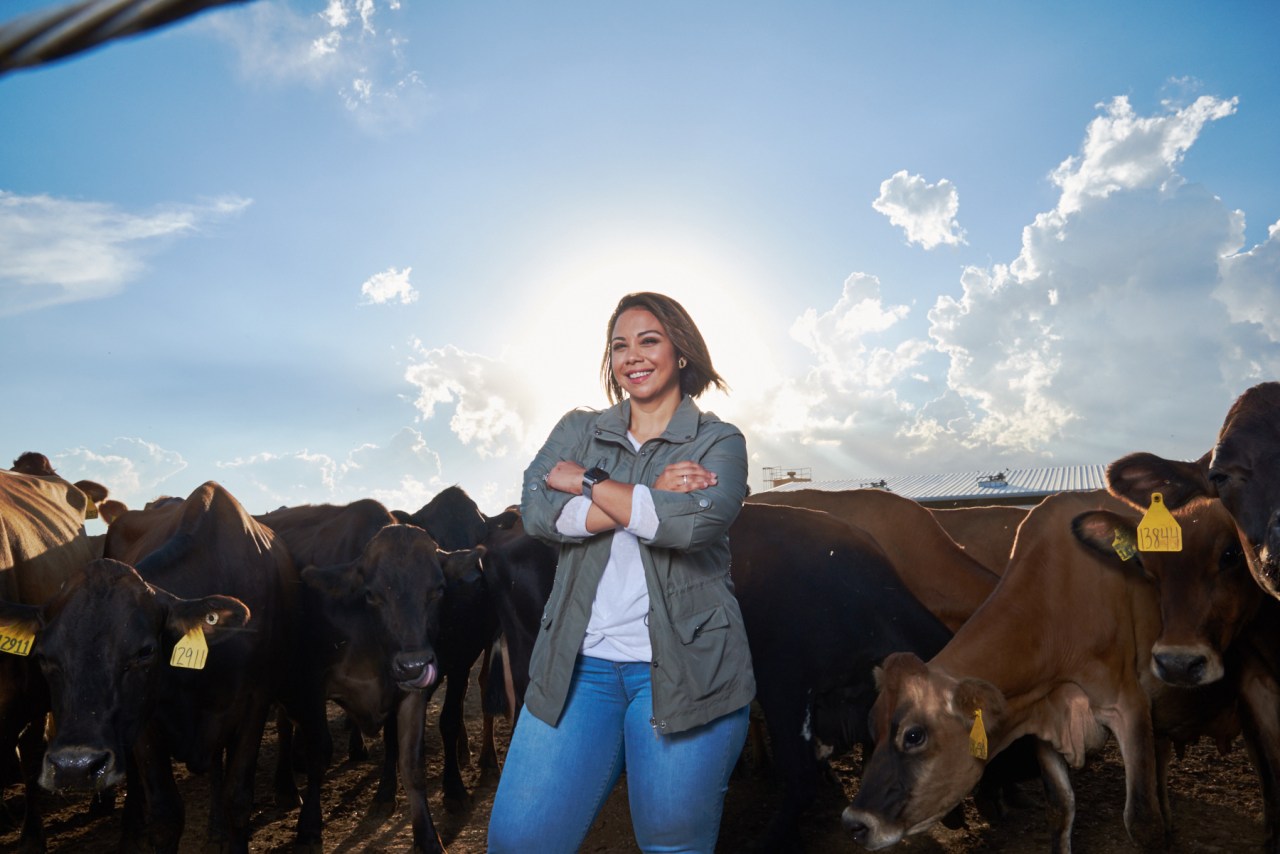
The Dairy Nutritionist Making All Her Childhood Dreams Come True
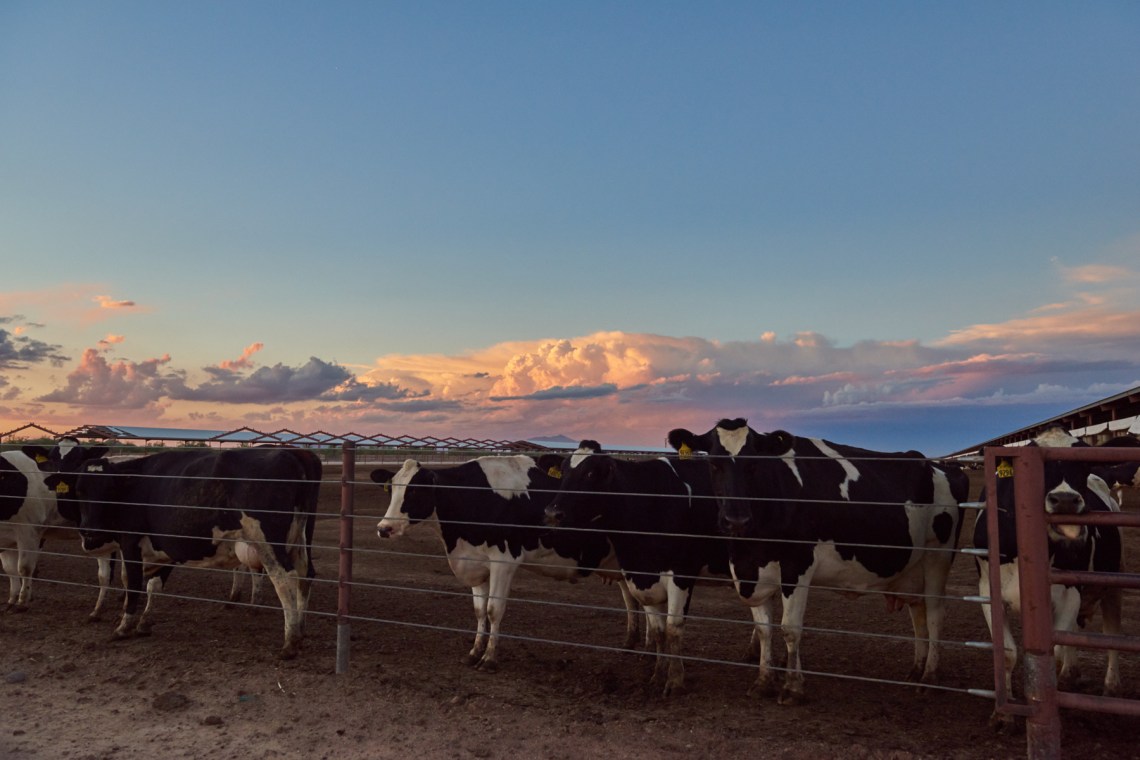
Rosemarie’s deep roots in dairy
“A lot of our vacations were spent in a van or a truck, visiting dairies,” remembers Rosemarie, who always accompanied her father from dairy to dairy, enthusiastically. Throughout that time, she recalls admiring her father and the hardworking dairy farmers he advised.
Beyond the day-to-day work of dairy farming, which interested Rosemarie very much, she also appreciated the familial setting.
“I really got to know the Arizona dairy farming community. I visited the farms. I met the families. And I saw how hard they worked to care for the cows.”
Even as a little girl, the camaraderie between everyone working together on the farm stood out to Rosemarie. She felt honored that her dad was part of a larger partnership focused on animal nutrition and care-taking. Ultimately, she understood that everyone was working to put food on people’s tables—a truly admirable endeavor.
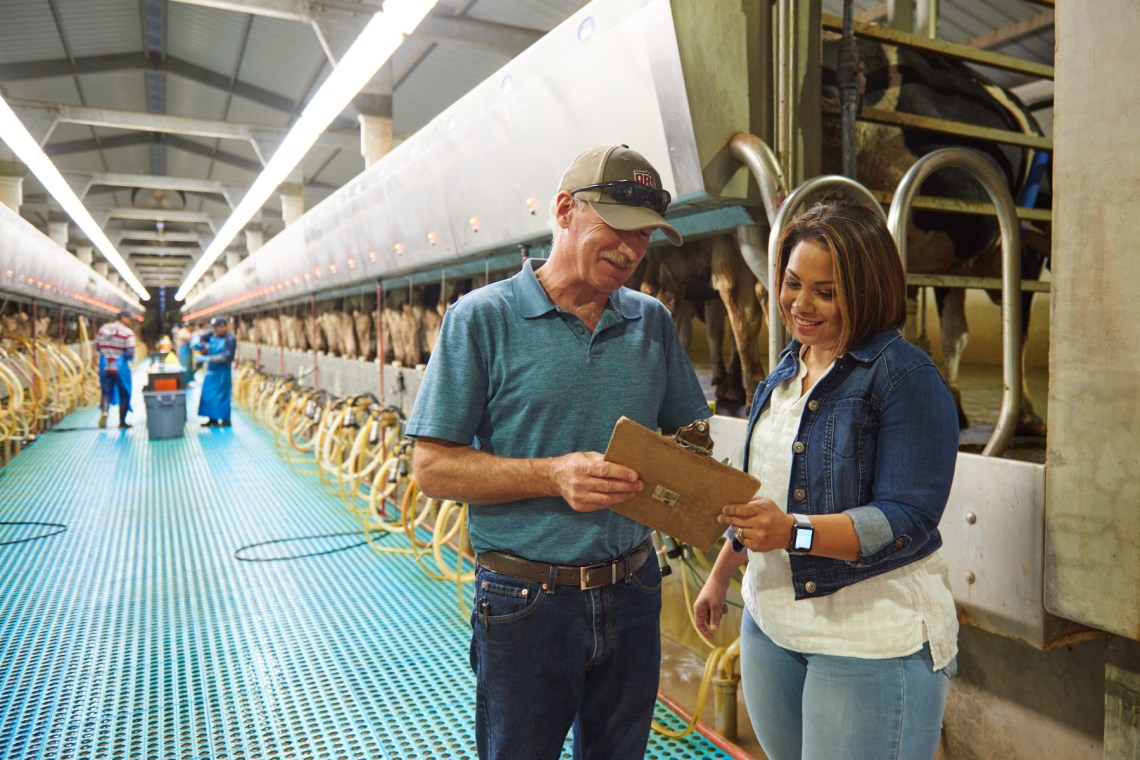
The art and science of cow nutrition and animal care
Today, Rosemarie relishes her role in the dairy industry, carrying her father’s torch by applying her vast knowledge in guiding farmers.
Just like any animal species, Rosemarie explains, cows have basic biological needs, some of which are met through proper nutrition. But the digestive systems of cows are a bit more complicated than ours. Unlike humans, who have single-chambered stomachs (monogastric), cows have four-chambered stomachs (ruminants). So there’s a lot more to consider in designing a cow’s diet.
“My job is to make sure the cows get the nutrition they need, and those needs change throughout a cow’s life cycle,” says Rosemarie.
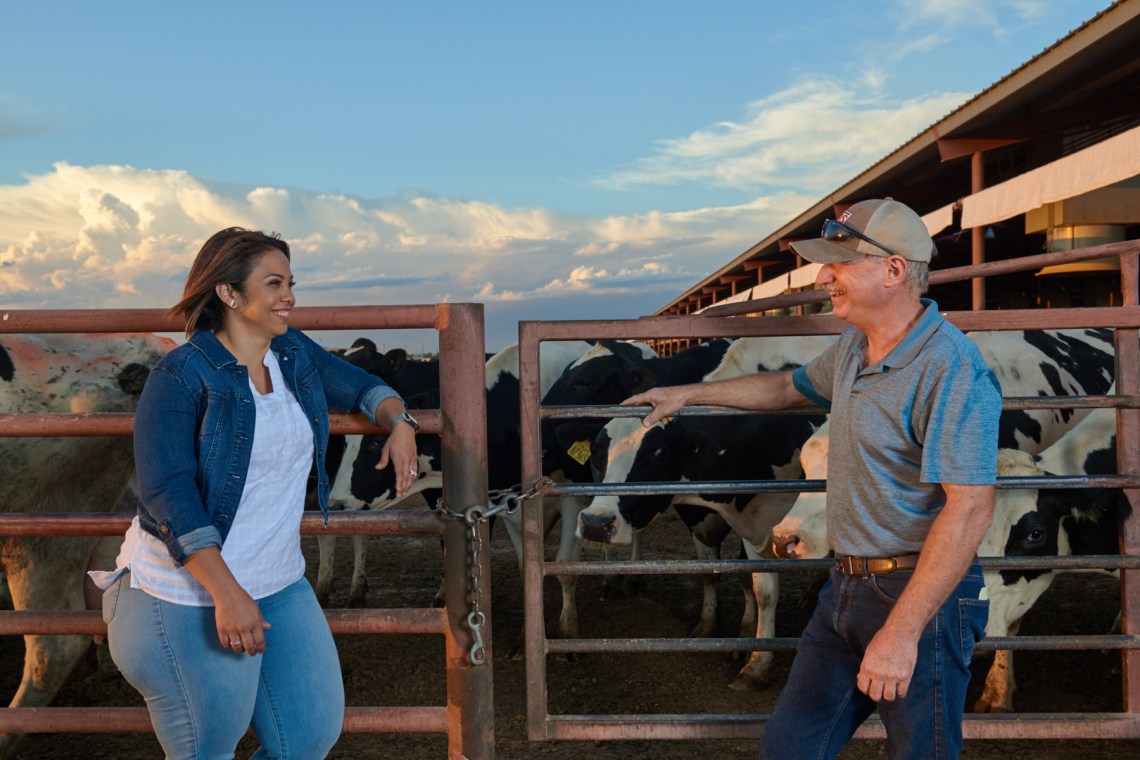
The dairy farmers Rosemarie works with (like the man pictured above) have the raw materials required to prepare their cows’ rations on hand, including hay, corn silages, and soybean meal among other nutrient-rich foods. But Rosemarie provides them with the exact recipes they need to prepare specific rations. Additionally, she supplies supplements to make sure each cow’s diet contains the appropriate vitamins and minerals.
Each dairy farmer tends to multiple groups of cows at different stages of life simultaneously. On any given day, Rosemarie helps dairies prepare up to 20 specialized rations depending on the size of the herd and age of the animals, which are mixed and distributed by feeders. A lot of work and careful thought goes into feeding cows from the moment they’re born all the way through adulthood.
When a calf is first born, its diet is carefully tailored from weeks, to months, then into pregnancy. Once she’s pregnant, at about 12 to 13 months of age, she continues on a growing ration and a pregnant heifer ration. Prior to giving birth, while staying in a special pen, she’s fed the “close-up heifer” diet. All rations are specifically designed to include vitamins and minerals so that animals are never deficient in nutritional requirements. During the “close up period,” it is critical to make sure that the animal’s nutritional needs are transitioned properly and that nutritional needs are met for the optimal birthing experience. Then there’s the “fresh heifer ration” followed by the “first lactation ration.” And so on.
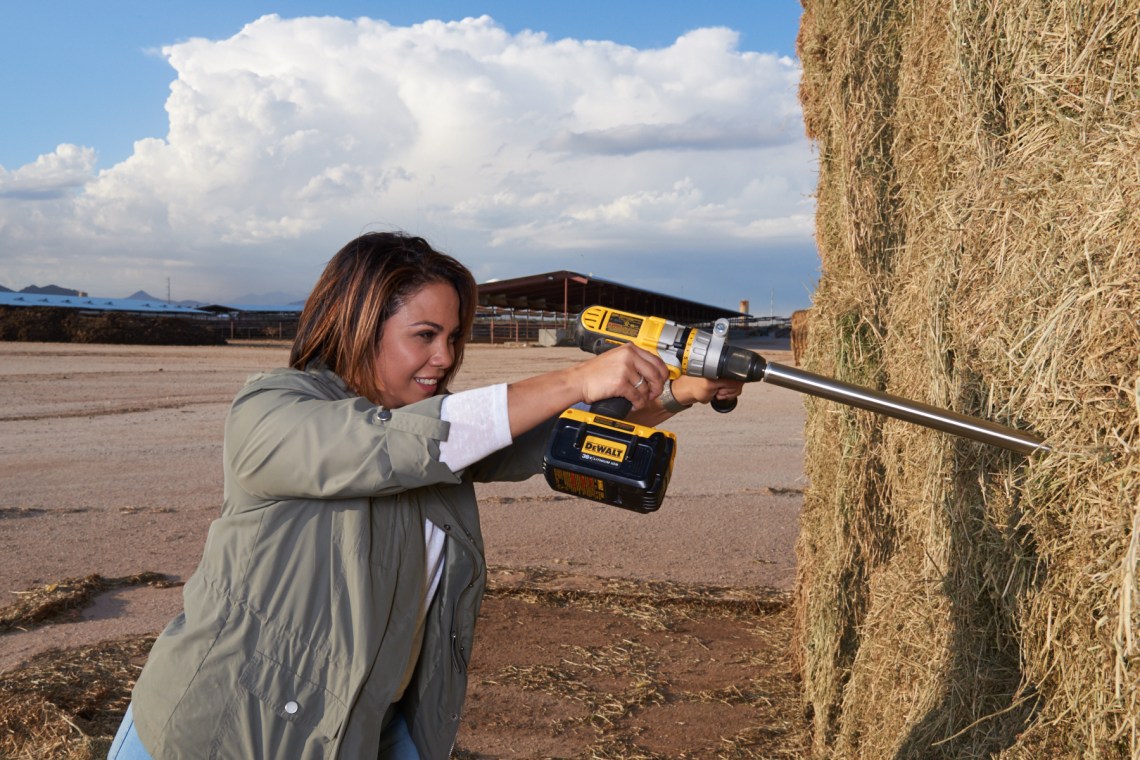
According to Rosemarie, who uses a drill to take test samples of feed elements to identify the exact nutrients they contain, cow care is rooted in scientific knowledge. But it’s also an art form.
“You have to rely on your instincts as well as the data,” she says. Adding, “My goal is to look at all angles, so I can do the best job for the dairy farmers and the cows.”

Caring for the environment and the community, too
Rosemarie speaks of her land fondly, as a sort of additional child that she’s honored to care for.
“We are stewards of the land,” she says, acknowledging the reality that without land, she wouldn’t be able to do what she loves.
She insists that she and her fellow dairy farmers are equally enthusiastic about conservation efforts. And thanks to innovations such as drip irrigation and specialized drainage systems, dairy farmers today are able to produce more milk using much less land and water than previous generations.
Rosemarie’s thoughtful attitude towards her surrounding environment is mirrored in her appreciation for the wider community. She genuinely considers all of the dairy farmers she works with to be friends.
She also believes in the unifying power of dairy. Whether you’re eating it on the go (in the form of cheese, milk, or yogurt), or consuming ice cream as part of a celebration, dairy tends to bring people together through shared joy, she notes. Considering how much love goes into the dairy we collectively consume, this isn’t so surprising.
Rosemarie sums up her passion for dairy—and that of the farmers she works with—perfectly when she says: “We love our land, we love our animals, we love our families, and we love this world.”
To see more inspiring stories from the people who are connecting you with the dairy on your plate, head to undeniably dairy.org/devoted. ![]()

